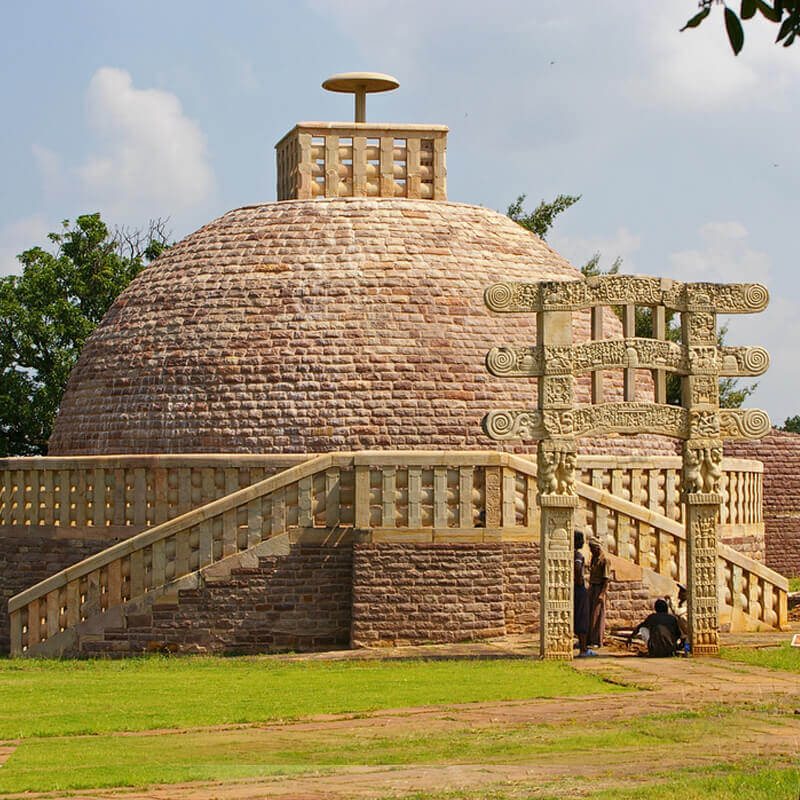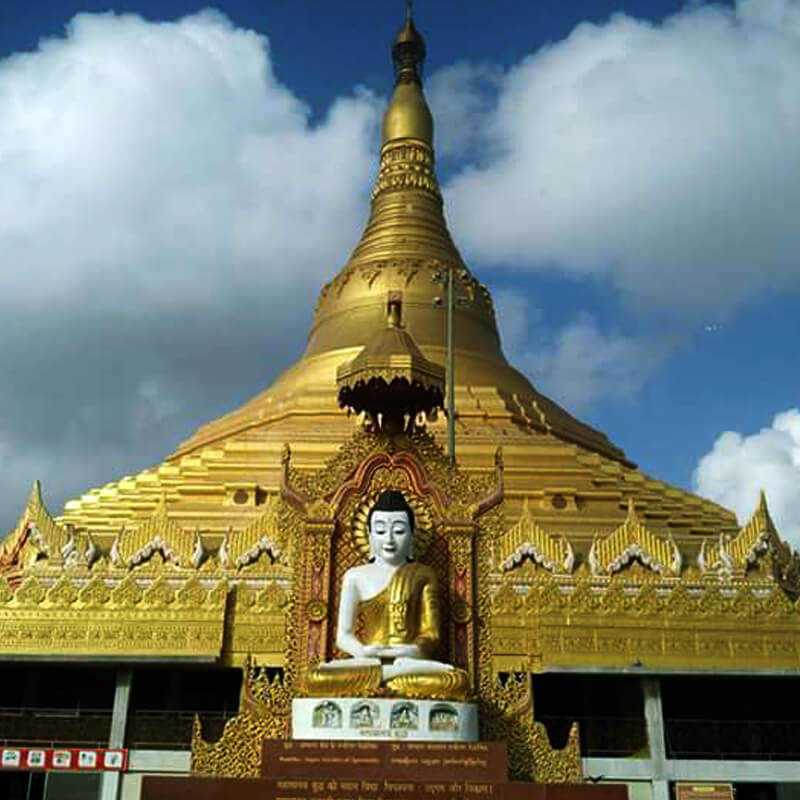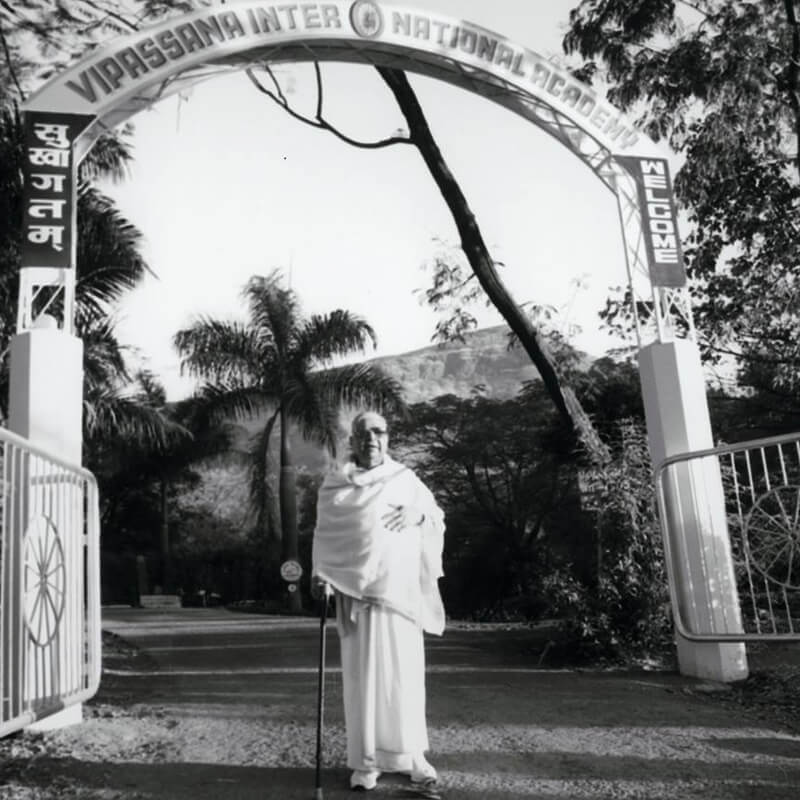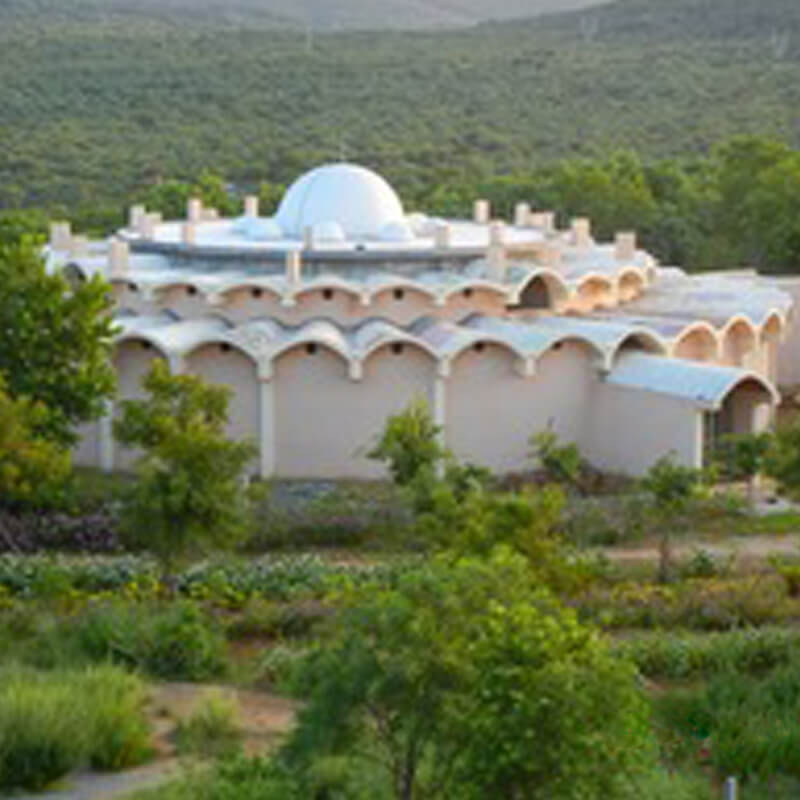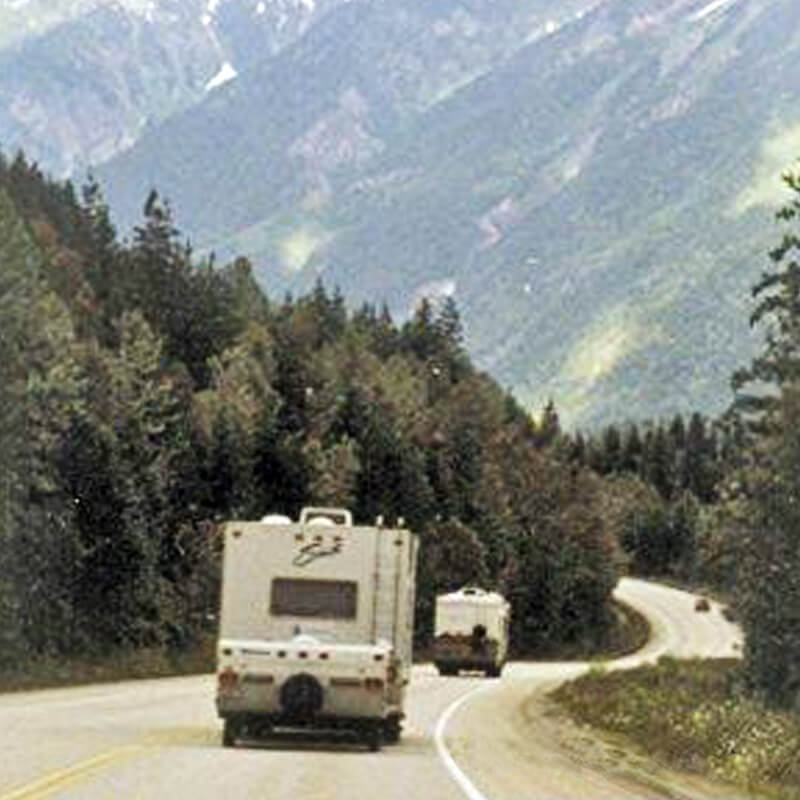India
The spread of Vipassana in India has an interesting history. The technique of Vipassana had been re-discovered by the Buddha and preserved in Burma in the teacher-disciple tradition. Goenkaji’s teacher, Sayagyi U Ba Khin, sincerely wanted to pay back Burma’s debt to India by returning the technique of Vipassana meditation to the land of its origin. Circumstances did not permit him to come to India and teach Vipassana himself, but his student Mr. S. N. Goenka, whom he had given thorough training to become a teacher of Vipassana, had the opportunity to do so. After facing initial difficulties, the first Vipassana course was held by Mr. Goenka at Panchayatiwadi, Mumbai in July 1969. Fourteen students participated in this course. The second course was held in the same year at Agarwal Bhavan, Chennai, which was attended by fifteen students. Gradually the numbers began to increase.
Initially there were several difficulties in organizing courses. Those who wanted to organize courses had to arrange for facilities like accommodation and food among other facilities. But people who had derived benefits from Vipassana sincerely wanted others also to have the opportunity to try it and get the benefits. So they did not lose heart. As Goenkaji recalls, “These people derived no material advantage from their work, nor did they expect any, not even name and fame. It was simply because they had benefited from this wonderful technique that they wanted more and more people to benefit”. This had a miraculous effect. Slowly and steadily Vipassana began to spread and people came to know about it by word of mouth. Another important factor that greatly contributed to the spread of Vipassana in the initial days was Goenkaji’s indefatigable zeal to travel the length and breadth of India to introduce Vipassana to the people. Between July 1969 and February 1998, Mr. Goenka conducted more than 425 courses across India.
In a country where the teachings of the Buddha were largely unknown or regarded with distrust, Goenkaji found a way to present the essence of Dhamma. He emphasized the universal nature of human suffering and taught how to overcome it through a process of self-observation, that removes one's mental impurities, irrespective of a person's religious or cultural traditions. Over the time, large numbers of people from different religions, ethnic groups and castes started participating in courses. Leaders of various religions joined in too. Leaders of the Hindu Samaj and the Vishwa Hindu Parishad sat courses and encouraged others in their communities to participate. Prominent leaders in the Christian community and many Christian priests and nuns also sat courses. Mother Superior Mary at Dalhousie (H.P.) once told Goenkaji, "You are teaching Christianity in the name of Buddha". In Kutch, two courses were held in a mosque, where leaders in Muslim communities also attended courses and encouraged many to sit the course. In Northern India and in Nagpur, Buddhist monks and nuns attended courses.One by one, all the communities started to join the courses.
Some of these students decided to establish Vipassana centers at Igatpuri, Hyderabad and Jaipur. They left no stone unturned to create facilities at the centers so that Vipassana courses could be held continuously. The three centers were then followed by setting up a center in Kutch. In this way many centers, one after the other, were established, and at present there are about 80 centers and 13 non-center locations in India that cater to the needs of those who aspire to lead a pure and peaceful life.
These centers are supported by over 500 teachers and assistant teachers in India, who help Goenkaji's mission of spreading Dhamma. Vipassana courses are now held regularly at all these centers and at many non-center locations. Thus, Dhamma is growing stronger and stronger in the country of its origin. To read the detailed history of the spread of Dhamma in India, please click here.
Current Highlights:
Central India: There are total 7 centers in Central India. Two centers are located in Chhattisgarh (Dhamma Garh and Dhamma Ketu) and five centers are located in Madhya Pradesh (Dhamma Kanana, Dhamma Pala, Dhamma Malwa, Dhamma Bala and Dhamma Rata). There is also one non-center location in District Guna.
Eastern India: There are total 8 centers in Eastern India. Two centers are located in Orissa (Dhamma Bhubaneshwar, Dhamma Utkal), two centers in Sikkim (Dhamma Sikkim, Dhamma Sineru), two centers (Dhamma Bodhi, Dhamma Licchavi) and two non-centers (Nalanda. Vaishali) in Bihar, one center each in Mizoram (Dhamma Pubbottara), Tripura (Dhamma Puri) and West Bengal (Dhamma Gaṅgā).
Northern India: There are total 18 centers in Northern India. Out of which, four centers (Dhamma Sota, Dhamma Paṭṭhāna, Dhamma Karunika, Dhamma Hitkari) are in Haryana, five centers (Dhamma Pubbaja, Dhamma Aranya, Dhamma Thali, Dhamma Marudhara, Dhamma Pushkar) and one non-center (Mt. Abu) are in Rajasthan, one center each in Himachal Pradesh (Dhamma Sikhara), Jammu & Kashmir (Dhamma Laddha) and Punjab (Dhamma Dhaja), five centers (Dhamma Kalyana, Dhamma Kaya, Dhamma Lakkhana, Dhamma Cakka, Dhamma Suvatthi) are in Uttar Pradesh and one center (Dhamma Salila) is in Uttarakhand.
Southern India: There are total 12 centers in Southern India. Out of which one non-center (Coimbatore) and four centers (Dhamma Setu, Dhamma Madhurā, Dhamma Kanchi, Dhamma Arunachala) are in Tamil Nadu. Two centers (Dhamma Ārāma, Dhamma Vijaya) are in Andhra Pradesh, four centers (Dhamma Khetta, Dhamma Koṇdañña, Dhamma Nāgājjuna, Dhamma Nijjhāna) are in Telangana, one center (Dhamma Paphulla) is in Karnataka, one center (Dhamma Ketana) and one non-center (Trivandrum) is in Kerala.
Western India: There are total 34 centers in Western India. Out of which two non-centers (Dharmaj, Dhamma Bhavana) and six centers (Dhamma Pīṭha, Dhamma Ambika, Dhamma Sindhu, Dhamma Divakara, Dhamma Pali, Dhamma Koṭa) are located in Gujarat. Maharashtra has the maximum, twenty-eight, number of centers. Out of which eight centers (Dhamma Giri, Dhamma Tapovana, Dhamma Tapovana 2, Dhamma Manamoda, Dhamma Nāsikā, Dhamma Jalgaon, Dhamma Sarovara, Dhamma Bhūsana) are located in Nasik division, three centers (Dhamma Ajantā, Dhamma Ᾱvāsa, Dhamma Niranjana) are in Aurangabad division, six centers (Dhamma Bhanḍāra, Dhamma Ajaya, Dhamma Gond, Dhamma Sugati, Dhamma Nāga, Dhamma Vasudhā) are located in Nagpur division, three centers (Dhamma Anakula, Dhamma Amravati, Dhamma Malla) are located in Amravati division, four centers (Dhamm Ālaya, Dhamma Punna, Dhammananda, Dhamma Sugandha) are located in Pune division, one non-center (Palghar) and four centers (Dhamma Pattana, Dhamma Vahini, Dhamma Sarita, Dhamma Vipula) are located in Konkan division, which includes Mumbai city, Two centers, Dhamma Pattana and Dhamma Vipula, are established in the outskirts of Mumbai city, the financial hub of India, to exclusively conduct executive courses.
Sri Lanka
Approximately every two years during the 1980s and 1990s, Goenkaji visited Sri Lanka and conducted several courses there. This led to the establishment of the following 4 centers in Sri Lanka:
Dhamma Kuta: The first Vipassana center in Sri Lanka was established in 1991, in the central district of Kandy. In addition to 10-day courses, long courses such as 20-day, 30-day and 45-day courses are conducted every year.
Dhamma Sobhā: The second Vipassana center is situated in Colombo district, at Kosgama on the Colombo-Ratanapura road. The first course was held there in March 2007. Since then, 10-day courses are held regularly in this center.
Dhamma Anuradha: The third Vipassana center is located in the outskirts of the historical city of Anuradhapura, which was the religious and political center of Sri Lanka for 1300 years . The Vipassana center is situated in a beautiful and secluded location between two ancient lakes. The Dhamma hall seats 100 students, and there is individual accommodation for 60 students. It started hosting courses in December 2010.
Dhamma Dharani: The fourth Vipassana center is situated in a beautiful rural locality at Maneruwa, Negampaha, Sri Lanka. Two lakes adjoining the property not only provide beautiful scenery but also bring a cool breeze to the Center. This Center is situated in the North Central Province, not very far from a reserved forest area, can be approached from Dambulla (45 km), from Kekirawa (35 km), and from Anuradhapura (60 km). The first courses was conducted in this Center in the year 2016.
Since 2010, 10-day courses are also being held in the rehabilitation centers in different parts of Sri Lanka. Most of the rehabilitees are former members of a Tamil militant group.
To read the detailed history of the spread of Dhamma in Sri Lanka, please click here.
Nepal
In the 1970's, Goenkaji did not have a permit to enter Nepal, so it was not until 1981 that Goenkaji and Mataji conducted the first course there, at a school in Kathmandu. This provided the inspiration to establish the first Vipassana meditation center in Nepal in that same year. Goenkaji came to conduct courses at Dharma Shringa regularly for many years in the early days of the spread of Vipassana in India and Nepal. Today there are 8 Vipassana meditation centers in Nepal. These centers draw many students from around the world to learn Vipassana in the land of the Buddha's birth.
Dharma Shringa: The center is in a serene place surrounded by hills on two sides - the Shivapuri Wildlife Reserve. It has passed through many stages of development and many buildings have been constructed. Currently, there are two separate facilities. 10-day courses are conducted in the main center which can accommodate around 250 students - two courses every month, from 1st to 12th and from 14th to 25th very month except during the festival periods. In the second facility with separate halls, residences (for about 40 students) and dining areas, executive courses as well as old student courses like Satipatthana, 20-day, 30-day and 45-day are regularly conducted.
Dhamma Birata: This center is surrounded by green paddy fields leading up to a Saal forest at the foothills of the scenic Himalayan mountains. It is located 1.5 km south-West of the Mahendra Highway and Koshi Highway junction near Itahari, conveniently accessible via road from all over Nepal.
Dhamma Tarai: The center is situated on a lush green 5-hector land, surrounded in the South and the North by two rivers, respectively called Kiyasut and Sirsiya, and located near the settlement of Parwanipur, about 9 km north of Birgunj, a town on the Nepal-India border.
Dhamma Chitwana: The center, established in 2004 on a five-acre land is situated near Bharatpur, a town located 150 kms southwest of Kathmandu.
Dhamma Surakhetta: The center, established in 2012, is located near Katkuwa, Birendranagar.
Dhamma Kitti: The center is located in Kirtipur, a beautiful and historical town situated 6 kilometers south west of Kathmandu city.
Dhamma Jananī: It is situated in Lumbini, the birth place of the Buddha. Situated near Bhairahawa City in the western region of Nepal.
Dhamma Pokhara: The center is located near Lekhnath Municipality, Pokhara region.
To read the detailed history of the spread of Dhamma in Nepal, please click here.

